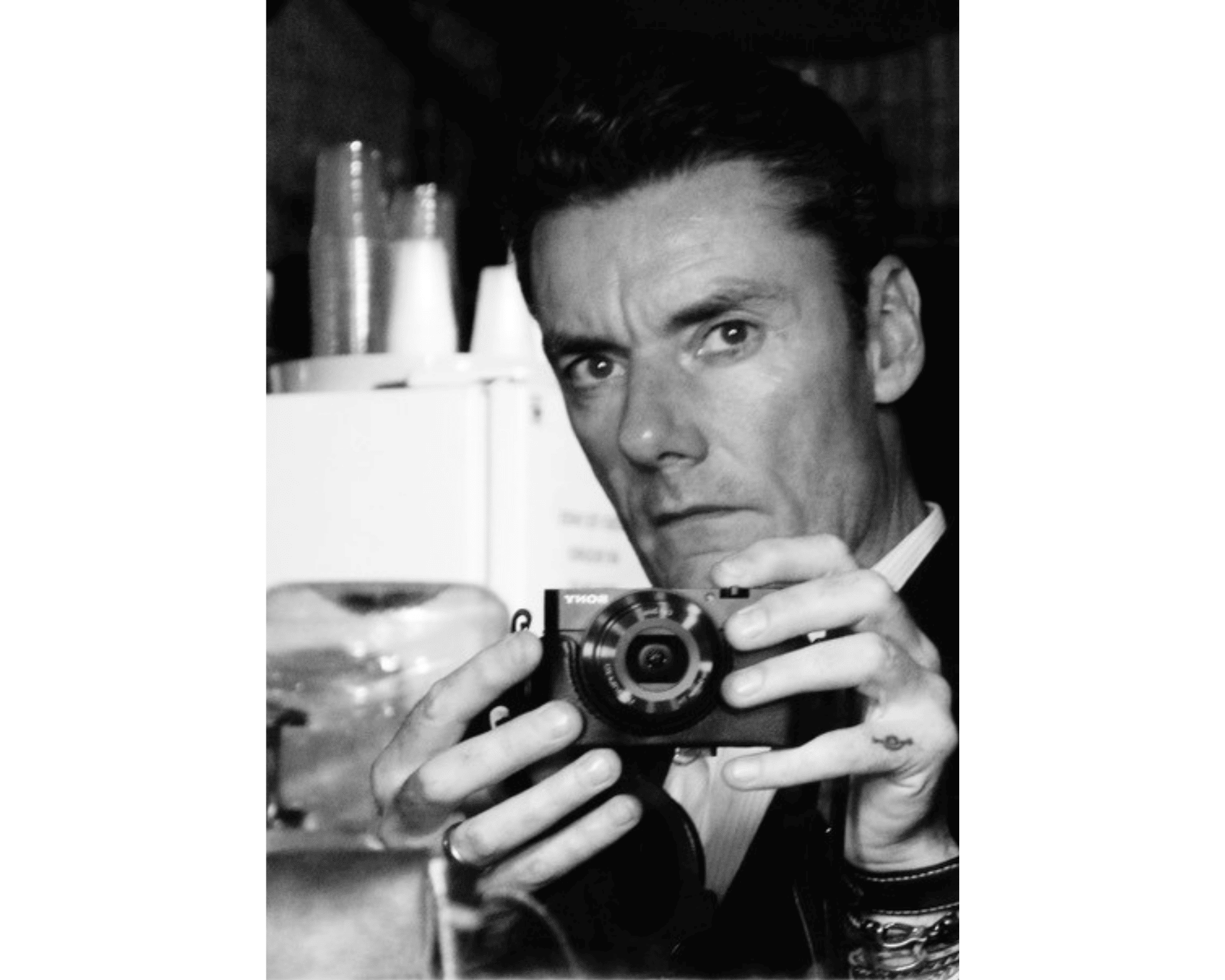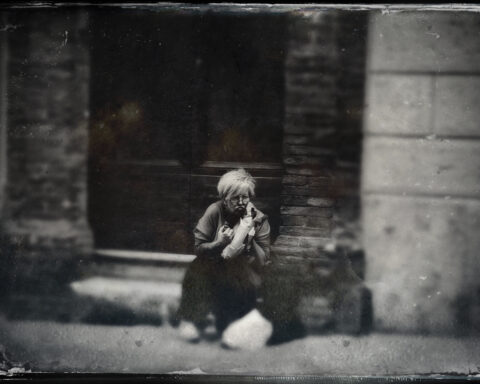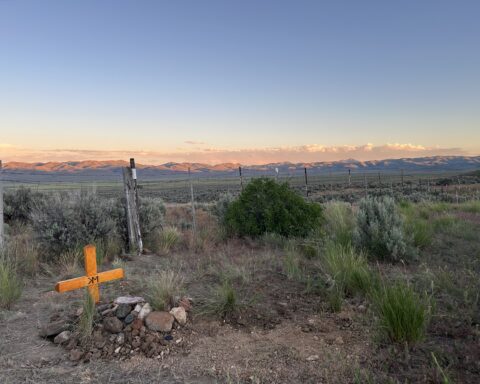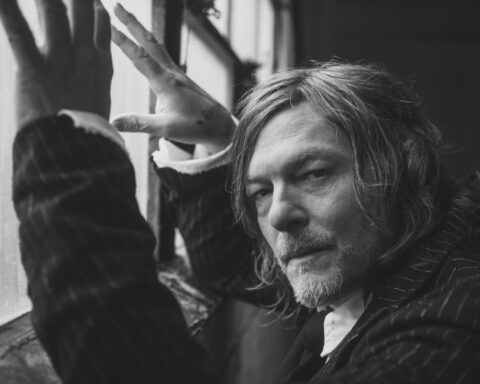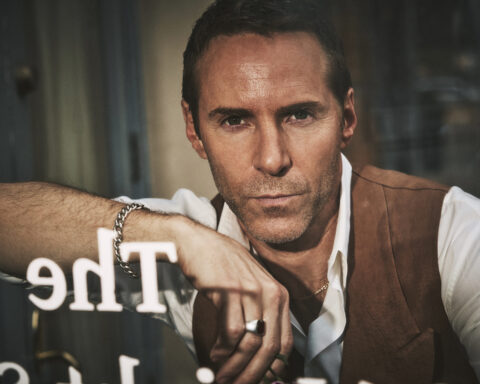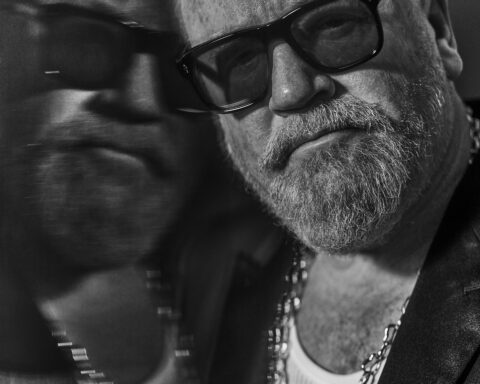I guess I’ll start with a few facts.
According to the American Cancer Society, one in nine men will be diagnosed with prostate cancer in their lifetimes, and one in 41 will die from the disease. Prostate cancer is the second biggest cancer killer of men, behind only lung cancer. The cause can be genetic, or just plain bad luck, although some studies show diet may play a part.
But most men with prostate cancer will not die from the disease, and there are more than three million in the US who have been diagnosed with prostate cancer in their lifetime who are still alive today.
My story starts in late 2011, with a visit to my dry-witted doctor, Ron Benbassat in Beverly Hills, California. It was a regular check up, but he wanted to check my prostate.
For those of you that don’t know, the prostate is the gland located between your bladder and urethra. I was a 45-year-old, relatively healthy vegetarian with seemingly no symptoms — like a slow urine stream or multiple nighttime trips to the loo — so wasn’t I too young to be checked? After all, most of the textbooks say to start checking at 50.
But I’m so happy he put on that rubber glove and asked me to bend over, saying the old line, “Don’t worry, this won’t hurt a bit.” He was right, it didn’t, but I wasn’t prepared for him to tell me my prostate felt unusual, almost calcified. He gave me the name of a urologist and told me to book an appointment straight away.

Miles at work with comedian Garry Shandling for a 2012 British GQ shoot
A week later, I was in the waiting room at Comprehensive Urology waiting to see Dr Kia Michel, one of the top urologists in the world, with a specialty in all things prostate. Lovely man that he is, I was again asked to bend over. I also did a PSA (Prostate Specific Antigen) test, which gauges the health of the prostate. A healthy prostate is below one on the scale. Mine was 13.
I was prescribed a course of antibiotics to cure what they thought was an infection. When my PSA didn’t go down, Dr Michel ordered a biopsy.
I had the biopsy in February 2012, and the results came quickly after. Stage 3C Prostate cancer, covering two thirds of my prostate. Most people assume when you’re told something like that you go into a bit of shock, but I don’t think that’s what I did. I simply asked what the next move was and he told me they had to take my prostate out as soon as possible.
Next came the options for the surgery, There are a bunch of nerve endings around the prostate that affect things like libido and erectile function. He wanted to take those out to make sure the cancer hadn’t spread. But I was 45 years old, with a beautiful 35-year-old wife. I’m sorry, but I wasn’t going to give up my sex life at that age. And I had way too much life left to live. We agreed to leave the nerve bundles in and proceed with the surgery. The date was set, March 22 2012.
With nearly a month to obsess and think about this life-changing event, I decided to document everything photographically. I wanted to show people cancer is nothing to be ashamed about, and something to be conquered. I also became very vocal on social media, urging every guy I knew to get checked, and a lot of my friends did, having the argument with their doctors about what age screening should start in the process.
I surprised myself, because for some reason, I didn’t feel any fear about the fact that I had been told I have ‘The Big C.’ I just thought, “Let’s get this thing out and move on with my life.” And that’s exactly what I did. I went to see an Eastern medicine nutritionist who wanted to get my body ready for the surgery by reducing any inflammation, both to help with the surgery and the recovery. He prescribed a foul-tasting tea, seemingly made from the juices at the bottom of a dumpster at the back of a restaurant, and gave me a list of ingredients for a morning smoothie, which I still have for breakfast to this day.

Miles in surgery
On the morning of the surgery I felt calm. My situation was immediately put into perspective as my wife and I waited with two families whose loved ones were having a heart and lung transplant. A motorcyclist had died in an accident and everything was put on hold as the loss of one life saved two.
I was finally called at 11am and went to prep, photographing all the way, nurses, needles, the ceiling lights from the gurney. And then into the theatre; lights, people and what looked like a futuristic metal octopus, ‘The da Vinci.’ Dr Michel was there, taking me through the procedure. I asked a nurse to take pictures while I was out, which they thought an odd request, but agreed to. The last picture I took was of the anesthesiologist asking me to count backwards from 10.
I woke up in the recovery room feeling warm and fuzzy, with a tube sticking out of one of the seven small incisions where Dr Michel had worked his magic. My wife Kirst was by my bedside looking concerned, until Dr Michel came by and told me the surgery went very smoothly and was a success. My wife relaxed, I smiled through the fog of the anesthetic slowly wearing off. By the way, the nurse gave me my camera back with pictures of doctors and nurses hamming it up around ‘The da Vinci’… and pictures of my bloated torso with robotic arms poking into it (they fill you with air so they have room to operate in a tight space).

Miles and The da Vinci surgical system
Now off to my personal recovery room, as I had to stay in the hospital for a couple of nights at least. Kids aren’t allowed in this wing, I guess because of the cancer patients here, most looking much worse than me. But they did send drawings which Kirst hung above my bed, plus flowers and chocolates from various well-wishers. I also saw myself for the first time in the mirror. Jaundiced looking skin, and my face was bloated and puffy, but on the bright side, my skin was stretched and there wasn’t a wrinkle in site!
The next two days and nights were a mix of Jello, (hospital food is, for some odd reason, terrible and unhealthy) sushi from Matsuhisha, (which was down the road, and way better that the slop they tried to serve me!) and three-hourly interruptions to check my blood pressure, drain my ‘blood bag’ and empty the catheter bag as needed. Yes, I now had a tube sticking out of my penis too.
I also had ‘physical therapy,’ a term I use very loosely as it consisted of a nurse walking along a corridor and up and down one flight of stairs each day. (When I got the bill, before all my insurance kicked in, the ‘PT’ was $4000!)
After three days I had the all clear to go home and properly start the healing process. At first I was pretty weak, not really able to do much but sit, watch TV and read. I was prescribed some hard-core painkillers, which I didn’t take as I wasn’t really in any pain, remarkable considering what my body had been through a few days earlier. I started to be more mobile very quickly. Showering was interesting as I had a catheter and bag and my drainage tube and bag. I was now a naked pair of cargo pants.
One thing that Dr Michel told was that because they were taking a mass from between the urethra and bladder, the penis naturally sinks back into that vacant space… i.e you lose an inch or so in length. I can confirm that this is sadly true. And as a guy, this does affect you psychologically for a while, a little self-doubt creeps in, but you do soon forget about it.
Two weeks after the surgery I went to have the drainage tube removed. It was the weirdest sensation, feeling your inside being gently sucked as the tube was pulled out slowly. A couple of staples later I was on my merry way. I started working again the next day, on a Fox promo shoot with Ryan Seacrest. I was a little slow, but back at it. Back to life, back to normality, of a sort.
The following day I had to go for an MRI to make sure they’d got everything they needed out. They seemingly had. Then came possibly the worst part of this whole thing…the removal of the dreaded catheter. Not sure if any of you have had a tube pulled very quickly from your penis, but unlike the first prostate check with the rubber-gloved doctor, they lie when they tell you you’ll only feel a little discomfort! It felt like they’d put a hot poker in there for about 15 minutes, but it wore off soon after that. The female doctor happily posed with the two foot long tube for a photo op. It’s amazing how little things like being able to pee on your own become big achievements!
Now to the main recovery, training myself not to pee involuntarily by doing Kegel exercises, and getting the blood flowing in my penis again so I could start using it for other activities. For this, they give you a penis pump, and some daily Cialis. Yet another first for me, and quite an odd thing to do, but needs must. After a couple of months things were getting back to normal in that department, thankfully!

Miles Siggins
The next few years were life as normal really, three-monthly, then six-monthly visits to Dr Michel to get my PSA, which was now down to 0, undetectable. So far so good…
Four years later, in 2016, we decided to move to Toronto. We sold our house and took a three-week road trip into the unknown. When we moved, I had to get a doctor’s report on my prognosis, to make sure I wasn’t going to be a burden on the free Canadian healthcare system. My prognosis was excellent. After a few stressful months, culminating in me working back in LA for three weeks every month, I went for my six-monthly PSA test. The results came back and it was up to 0.2, then 4 months later, 0.4. Then 0.6, 0.8 and then 2.9 by April of 2018.
At this point it was clear something was going on, and although an MRI couldn’t see anything, they were pretty sure there was a microscopic piece of cancer left in there.
From the moment my PSA started going up, I took an holistic approach, all natural, still the morning smoothie with a couple of added ingredients and a healthy dose of CBD oil. Dr Michel suggested a different approach, radiation, which I was not keen on. It would have killed my libido in one swoop, and also risked damaging other internal parts of me, so I said no. To his credit Dr Michel stood by my decision and let me do my thing.
Things didn’t pan out the way I’d hoped, and by September my PSA was at seven. Now I had to consider different options, as radiation was now out the question as its efficacy drops rapidly past a PSA of two. Medication was the only way.
Over the last three years, I’ve tried various prescribed medications to reverse my PSA, all of which have had various side effects, from microbial colitis, to breast tissue growing, to a very low libido, plus a few more. They kept my PSA down to nearly undetectable, but to be honest, I just don’t like the way I feel on them, I don’t feel myself and I want to be able to hug my kids without my breasts hurting. I’ve recently taken myself off the last prescribed medication… and now to tackle this thing with lifestyle changes.
My Mum always asks me how I’m feeling, thinking that I can feel the cancer inside me. I can’t, this thing is silent and I’m hoping slow. I’ve started exercising more regularly, taking CBD once again, cut my alcohol consumption down, am careful about sugar, (cancer loves sugar!), plus I’m eating a mainly vegan, alkaline diet. I’m generally trying to live my best, healthy life. Reducing stress is a huge part of staying healthy and, I believe, keeping my cancer at bay. I am now meditating again, and I feel great!
To this day, neither my dad nor brother have been to get their prostates checked, so I have to presume my prostate cancer was just bad luck.
Cancer is not just about the destination, it’s about the journey, learning to live with it and finding the balance between quality of life and hopefully managing the spread of the disease, with the obvious end goal of eradicating it from your body. For me, I’ve made a lot of positive changes to my life but am still working on that balance, as I value quality of life above all. “Live while you live!”
And the real moral of this story is don’t wait until you’re 50, start getting checked when you’re 40, and if the doctors argue, tell them to call me.


